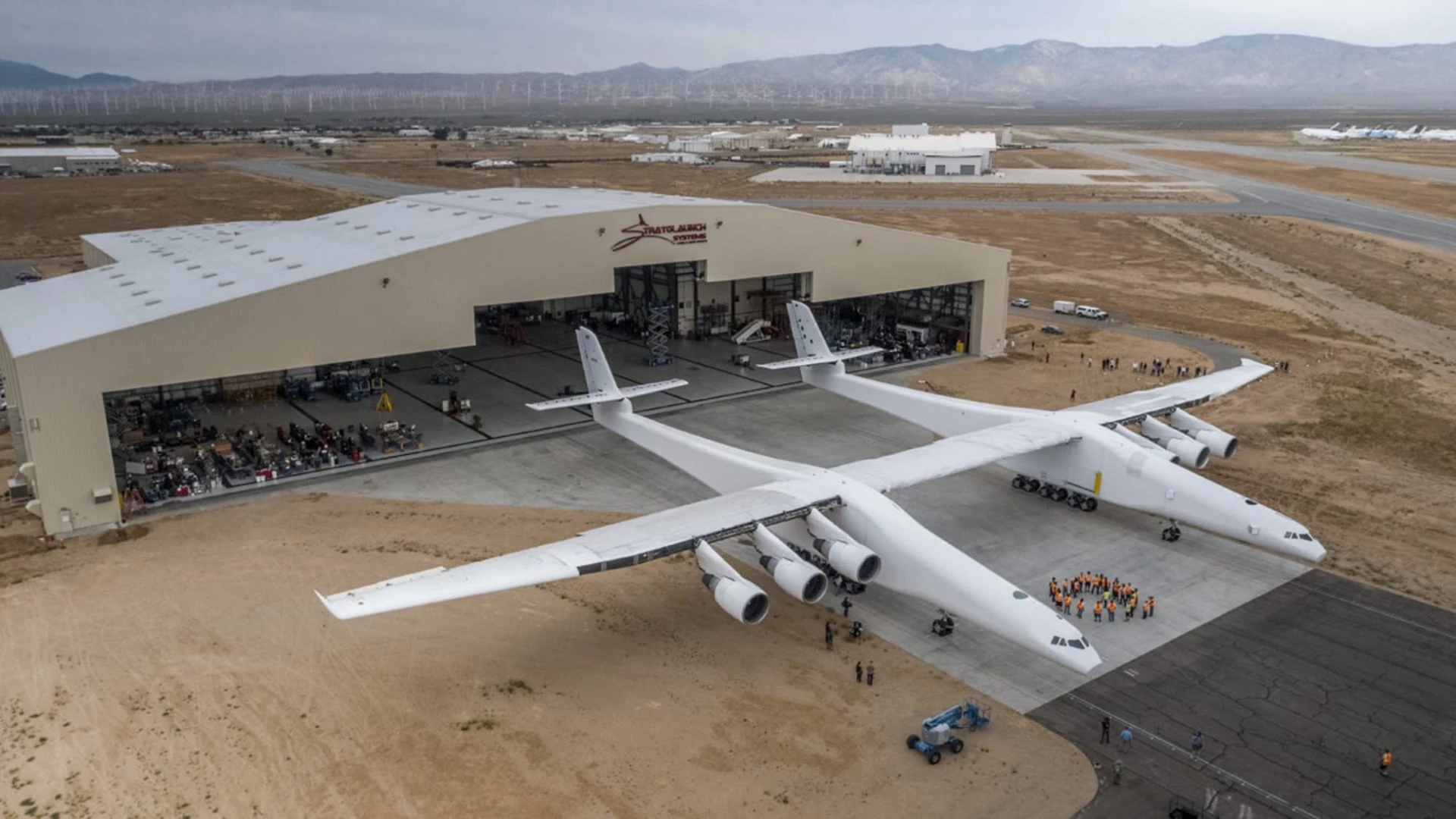Back in June, the world's largest plane emerged from its hangar for the first time. Reactions varied from those skeptical about the design ("what an odd bird!"), to straight-up excitement over the innovative plane ("a stunning-looking aircraft!"). Now the team has crossed another milestone by completing the first round of engine testing, continuing the groundwork needed to get the beast into the air in 2019.
Stratolaunch is one of several new companies working to develop a functional air-launch-to-orbit aircraft. The project has been in development for almost seven years and this engine test is another successful benchmark crossed in the plane's development.
The plane carries six Pratt & Whitney turbofan engines lifted from two used Boeing 747-400s. The engine tests comprised three phases – a "dry motor" run using auxiliary power, a "wet motor" run introducing jet fuel, and finally an idling test where each of the six engines were observed to ensure they were all operating properly.

"Over the next few months, we will continue to test the aircraft's engines at higher power levels and varying configurations, culminating to the start of taxi tests," writes CEO Jean Floyd announcing the successful tests.
The Stratolaunch is undoubtedly a massive feat of aircraft engineering, with a giant wingspan of 385 ft (117 m), the company plans to continue engine tests over the coming months with the next milestone being taxi tests.
Source: Stratolaunch
















